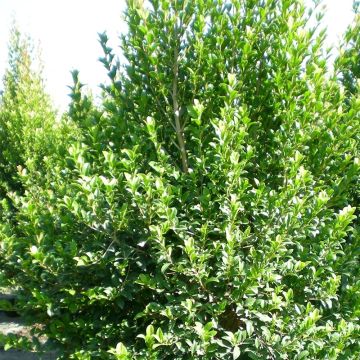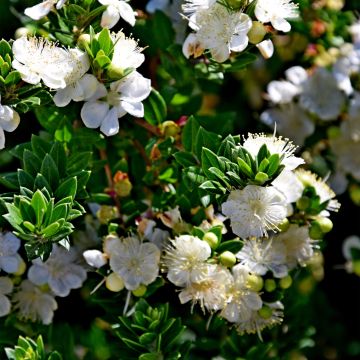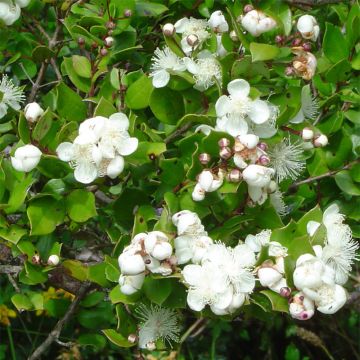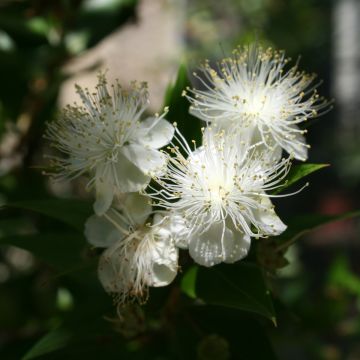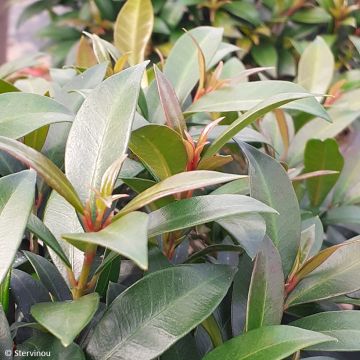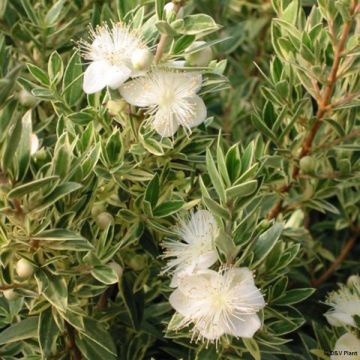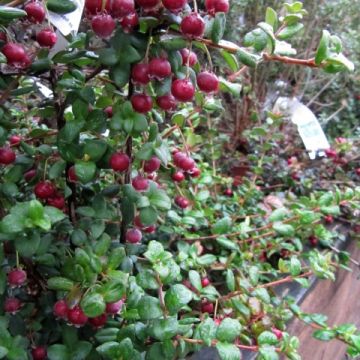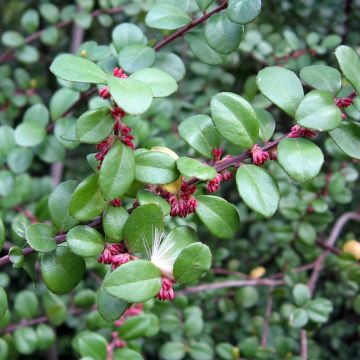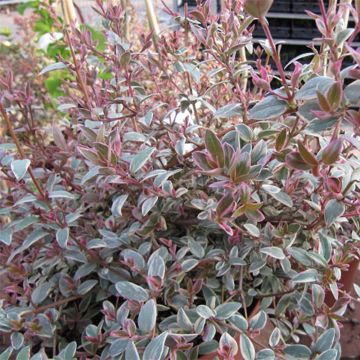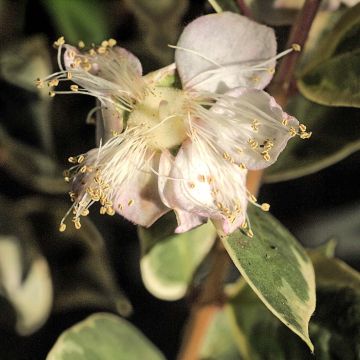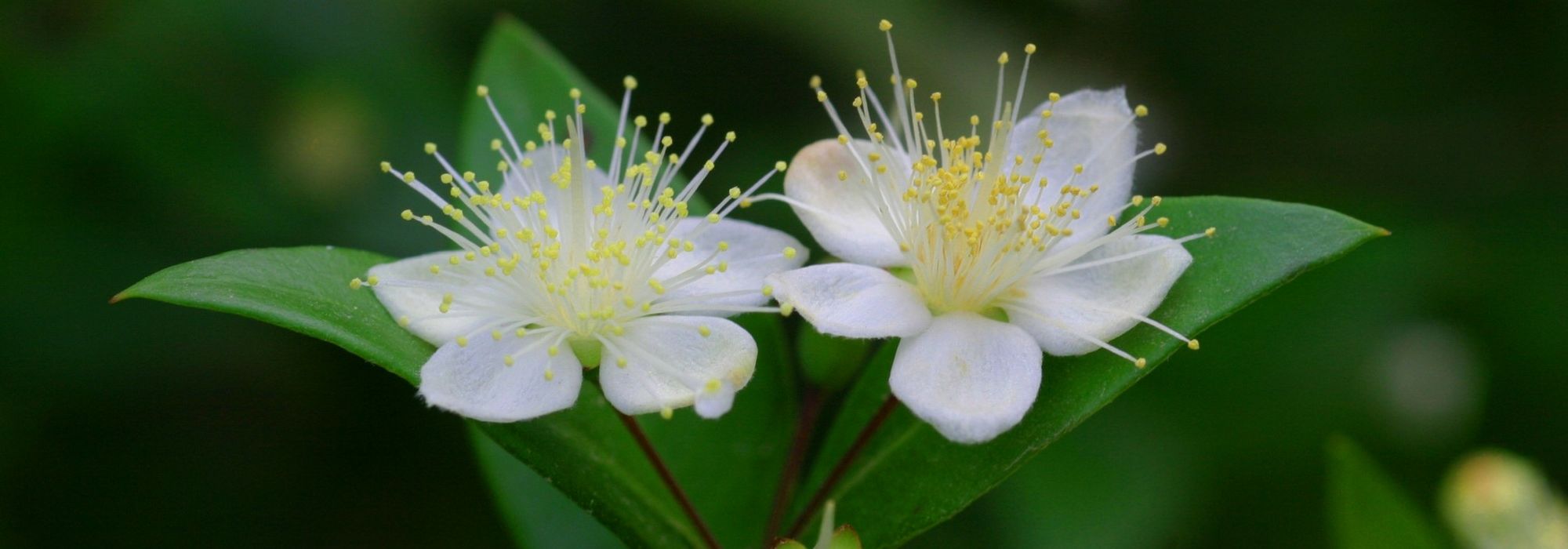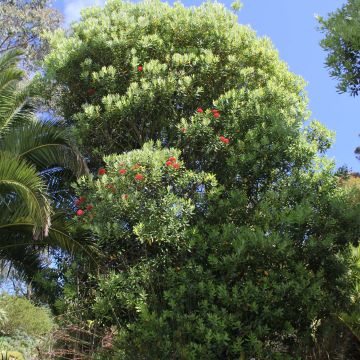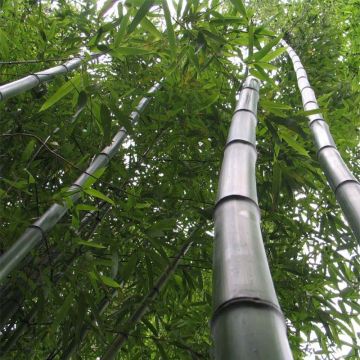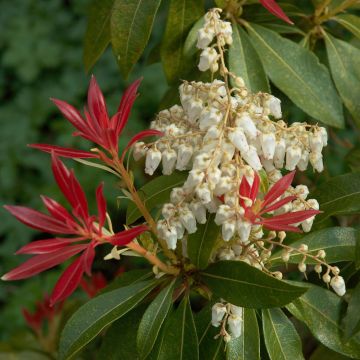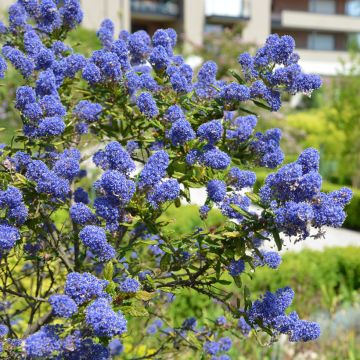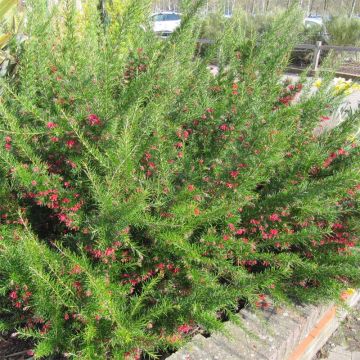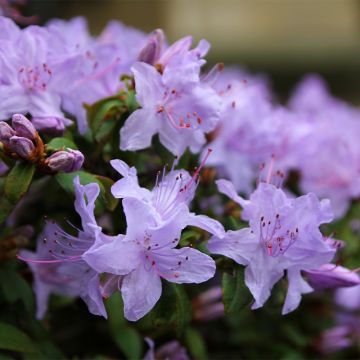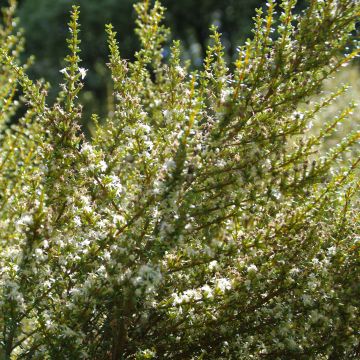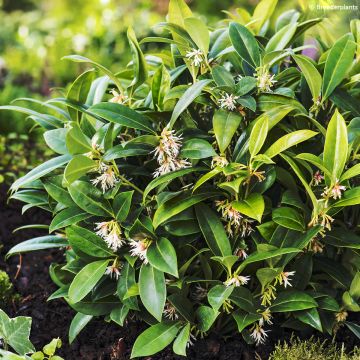

Luma chequen - Myrte du Chili
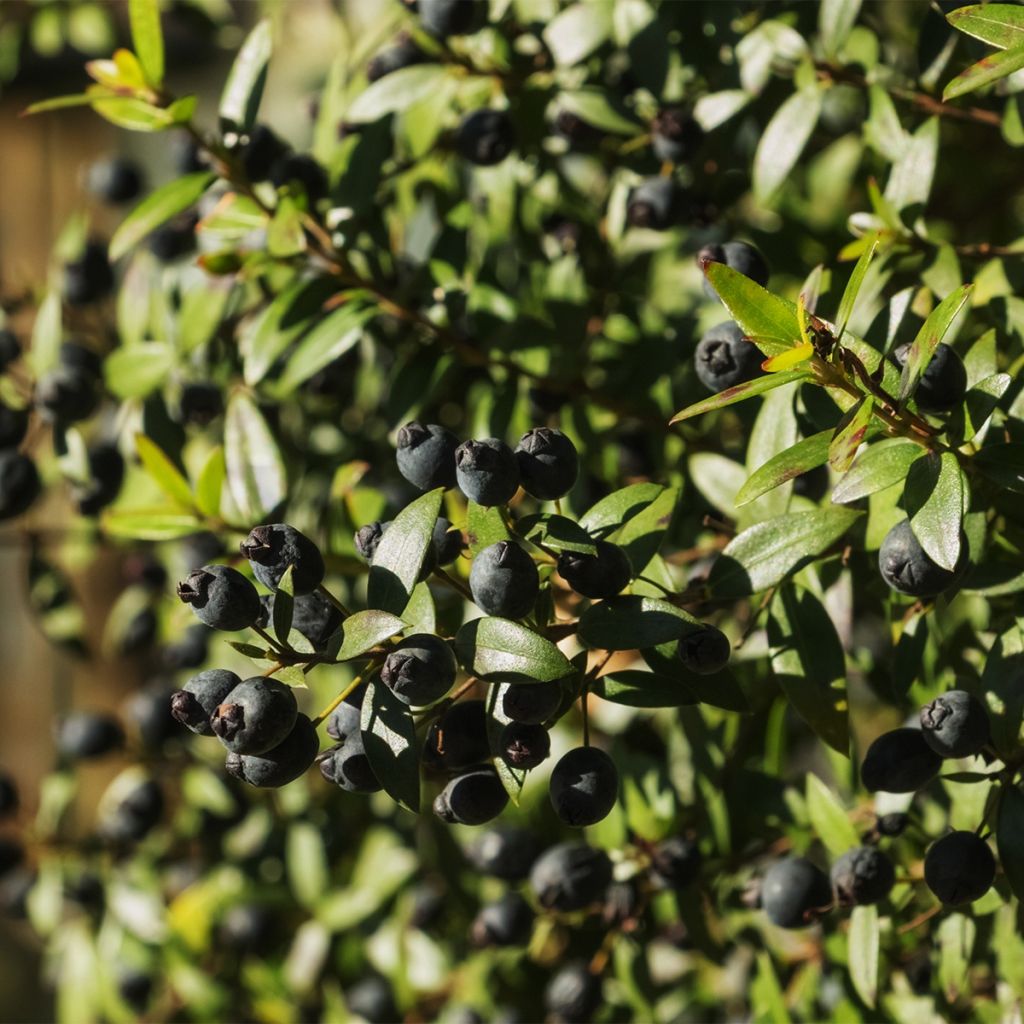

Luma chequen - Myrte du Chili
Luma chequen
Luma chequen
White-flowered Myrtle, Chilean Myrtle
Beautiful and vigorous young plant. Its height corresponds to the one announced.
Marie-Anne, 27/04/2022
Special offer!
Receive a €20 voucher for any order over €90 (excluding delivery costs, credit notes, and plastic-free options)!
1- Add your favorite plants to your cart.
2- Once you have reached €90, confirm your order (you can even choose the delivery date!).
3- As soon as your order is shipped, you will receive an email containing your voucher code, valid for 3 months (90 days).
Your voucher is unique and can only be used once, for any order with a minimum value of €20, excluding delivery costs.
Can be combined with other current offers, non-divisible and non-refundable.
Why not try an alternative variety in stock?
View all →This plant carries a 24 months recovery warranty
More information
We guarantee the quality of our plants for a full growing cycle, and will replace at our expense any plant that fails to recover under normal climatic and planting conditions.
Would this plant suit my garden?
Set up your Plantfit profile →
Description
Luma chequen, also known as Molina or Myrtus chequen, is a Chilean myrtle that should not be confused with the Luma apiculata despite their many similarities. Luma chequen is a shrub of smaller size, but with faster growth, whose leaves are smaller and have a flavour and aroma curiously reminiscent of chewing gum. Very bushy, dense in foliage, it is covered, from late summer to autumn, with a fragrant cloud of small cream-white flowers with prominent stamens. Preferring the humidity and mildness of oceanic climates over the Mediterranean dryness, it makes a beautiful subject to be planted in a hedge in a mild climate, or in a large pot on a patio in a cold climate.
Luma chequen belongs to the myrtle family. It is a shrub that generally reaches 2m (6 ft 7 in) in height and about 1m (3 ft 4 in) in width in most climates. It is found in the wild in the forests of the central Andes, located between Chile and Argentina, up to 2000 m (6561 ft 8 in) altitude, often not far from rivers. In Europe, the most beautiful Chilean myrtles grow in Irish gardens. The growth of this Myrtle chequen is quite fast and its habit is naturally dense, branching and very bushy. The leaves, round to ovate, leathery, pointed, are very aromatic. They measure no more than 1.5 cm (0.6 in) long by 1 cm (0.4 in) wide, and are a shiny dark green colour. The shrub, very rich in nectar, blooms generously between late August and late September or early October. The small white flowers, pleasantly fragrant, are 1 to 2 cm (0.4 to 0.8 in) wide and have 5 petals. They open on a large cluster of prominent stamens. They are solitary, borne as inflorescences on a long stem and appear in the axils of the leaves, on the shoots of the same year. After pollination, small rounded, fleshy, edible, sweet and aromatic fruits form, becoming dark violet and shiny when ripe in autumn. They are sought after by certain birds. The bark of this Luma chequen, smooth and grey-brown, is less remarkable than that of its close relative, Luma apiculata.
Hardy to about -7°C (19.4 °F), tolerant of pruning, the Chilean myrtle chequen is an elegant orangery plant in cold climates. In a greenhouse or conservatory, it will make an extremely decorative grouping with a lemon tree, a Tibouchina or a mimosa, evoking landscapes with exotic charm and fragrance. In mild climates, it can be used as a hedge, in isolation, or even at the back of a bed, even on the edge of a woodland. It can be associated with shrubby ceanothus ('Italian Skyes', 'Concha', 'Puget Blue', 'Skylark'...), Leptospermum, or even red-flowering callistemons (Callistemon citrinus 'Splendens', Callistemon viminalis), large Grevillea.
Luma chequen in pictures
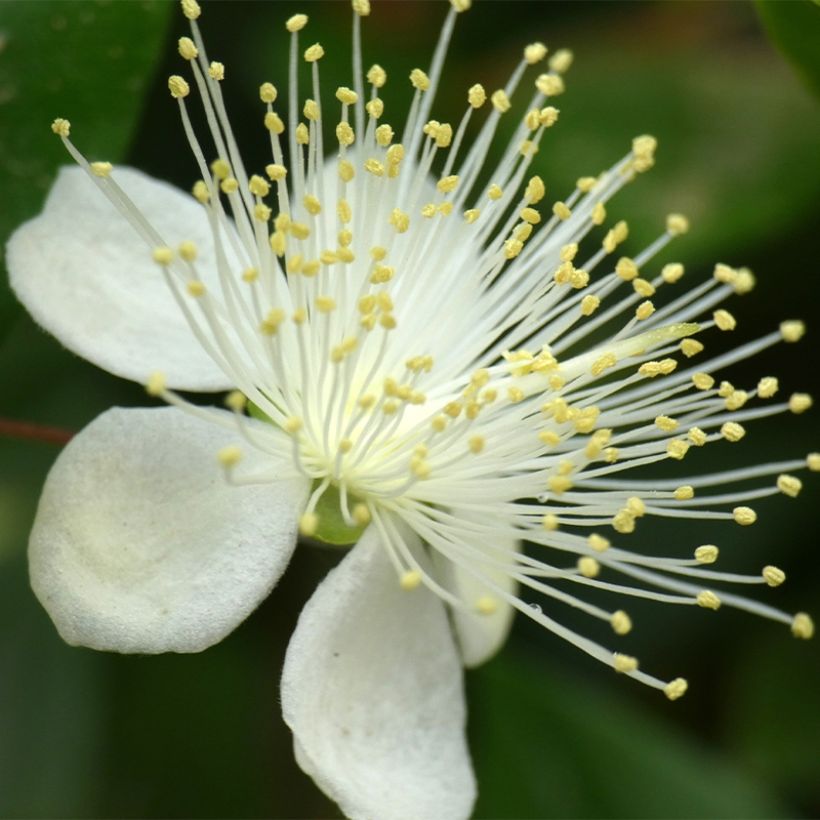

Plant habit
Flowering
Foliage
Botanical data
Luma
chequen
Myrtaceae
White-flowered Myrtle, Chilean Myrtle
South America
Other Myrtus - Myrtle
View all →Planting and care
Myrtus chequen will thrive in a soil that is light, well-drained, and remains moist in summer. It can tolerate various types of soil, whether humus-rich, slightly rocky, or sandy, and it can tolerate slightly acidic, neutral, or even slightly alkaline soil. It can withstand coastal conditions. Plant it after the last frost or in September-October in warmer climates. It will thrive in full sun or partial shade. Under these conditions, it is hardy down to -7°C (it may lose its leaves at -6°C), and can live for many years. Provide winter protection by wrapping it in horticultural fleece in colder regions, and isolate it from the cold as much as possible. Place it in the warmest corner of the garden, against a south-facing wall in full sun. However, away from milder coastal regions, it will be necessary to grow it in a large pot and store it indoors during winter, in a bright but unheated area. To shape the plant, you can prune the stems in March-April or after flowering to encourage branching. Pruning is well tolerated.
Cultivation in pots:
Ensure good drainage at the bottom of a large pot. Use a lightweight substrate, enriched with leaf compost, and apply a slow-release fertilizer in late winter and autumn. Water generously in summer, allowing the soil to dry out slightly between waterings. The more you water, the more your myrtle will flower.
Planting period
Intended location
Care
Planting & care advice
-
, onOrder confirmed
Reply from on Promesse de fleurs
Similar products
Haven't found what you were looking for?
Hardiness is the lowest winter temperature a plant can endure without suffering serious damage or even dying. However, hardiness is affected by location (a sheltered area, such as a patio), protection (winter cover) and soil type (hardiness is improved by well-drained soil).

Photo Sharing Terms & Conditions
In order to encourage gardeners to interact and share their experiences, Promesse de fleurs offers various media enabling content to be uploaded onto its Site - in particular via the ‘Photo sharing’ module.
The User agrees to refrain from:
- Posting any content that is illegal, prejudicial, insulting, racist, inciteful to hatred, revisionist, contrary to public decency, that infringes on privacy or on the privacy rights of third parties, in particular the publicity rights of persons and goods, intellectual property rights, or the right to privacy.
- Submitting content on behalf of a third party;
- Impersonate the identity of a third party and/or publish any personal information about a third party;
In general, the User undertakes to refrain from any unethical behaviour.
All Content (in particular text, comments, files, images, photos, videos, creative works, etc.), which may be subject to property or intellectual property rights, image or other private rights, shall remain the property of the User, subject to the limited rights granted by the terms of the licence granted by Promesse de fleurs as stated below. Users are at liberty to publish or not to publish such Content on the Site, notably via the ‘Photo Sharing’ facility, and accept that this Content shall be made public and freely accessible, notably on the Internet.
Users further acknowledge, undertake to have ,and guarantee that they hold all necessary rights and permissions to publish such material on the Site, in particular with regard to the legislation in force pertaining to any privacy, property, intellectual property, image, or contractual rights, or rights of any other nature. By publishing such Content on the Site, Users acknowledge accepting full liability as publishers of the Content within the meaning of the law, and grant Promesse de fleurs, free of charge, an inclusive, worldwide licence for the said Content for the entire duration of its publication, including all reproduction, representation, up/downloading, displaying, performing, transmission, and storage rights.
Users also grant permission for their name to be linked to the Content and accept that this link may not always be made available.
By engaging in posting material, Users consent to their Content becoming automatically accessible on the Internet, in particular on other sites and/or blogs and/or web pages of the Promesse de fleurs site, including in particular social pages and the Promesse de fleurs catalogue.
Users may secure the removal of entrusted content free of charge by issuing a simple request via our contact form.
The flowering period indicated on our website applies to countries and regions located in USDA zone 8 (France, the United Kingdom, Ireland, the Netherlands, etc.)
It will vary according to where you live:
- In zones 9 to 10 (Italy, Spain, Greece, etc.), flowering will occur about 2 to 4 weeks earlier.
- In zones 6 to 7 (Germany, Poland, Slovenia, and lower mountainous regions), flowering will be delayed by 2 to 3 weeks.
- In zone 5 (Central Europe, Scandinavia), blooming will be delayed by 3 to 5 weeks.
In temperate climates, pruning of spring-flowering shrubs (forsythia, spireas, etc.) should be done just after flowering.
Pruning of summer-flowering shrubs (Indian Lilac, Perovskia, etc.) can be done in winter or spring.
In cold regions as well as with frost-sensitive plants, avoid pruning too early when severe frosts may still occur.
The planting period indicated on our website applies to countries and regions located in USDA zone 8 (France, United Kingdom, Ireland, Netherlands).
It will vary according to where you live:
- In Mediterranean zones (Marseille, Madrid, Milan, etc.), autumn and winter are the best planting periods.
- In continental zones (Strasbourg, Munich, Vienna, etc.), delay planting by 2 to 3 weeks in spring and bring it forward by 2 to 4 weeks in autumn.
- In mountainous regions (the Alps, Pyrenees, Carpathians, etc.), it is best to plant in late spring (May-June) or late summer (August-September).
The harvesting period indicated on our website applies to countries and regions in USDA zone 8 (France, England, Ireland, the Netherlands).
In colder areas (Scandinavia, Poland, Austria...) fruit and vegetable harvests are likely to be delayed by 3-4 weeks.
In warmer areas (Italy, Spain, Greece, etc.), harvesting will probably take place earlier, depending on weather conditions.
The sowing periods indicated on our website apply to countries and regions within USDA Zone 8 (France, UK, Ireland, Netherlands).
In colder areas (Scandinavia, Poland, Austria...), delay any outdoor sowing by 3-4 weeks, or sow under glass.
In warmer climes (Italy, Spain, Greece, etc.), bring outdoor sowing forward by a few weeks.






























